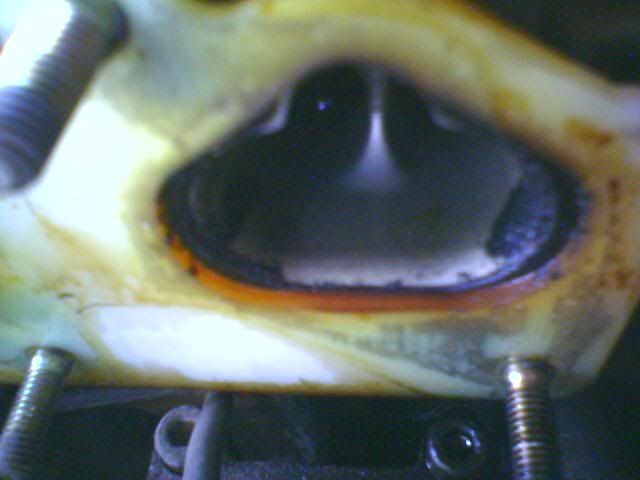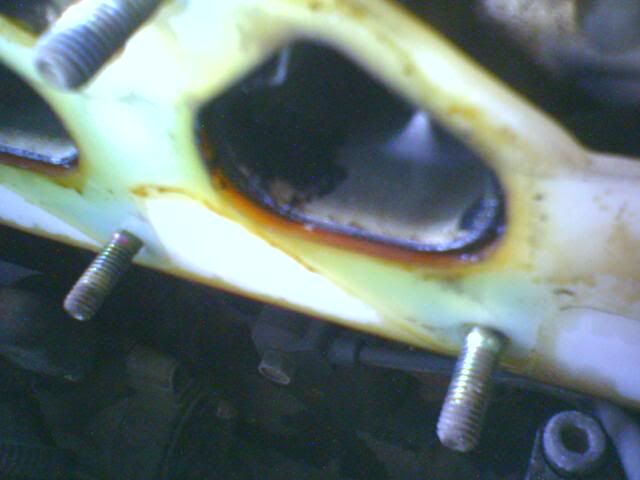
^^ This picture was taken nearly 20,000 Miles ago when I switched my intake. The car is a 1998 Hyundai Tiburon with 118K miles.
The pictures below were taken today when I swapped manifolds back again. I have not removed the assembly before today and have only used the following fuel additives:
1) Techron X 2
2) Seafoam through the vaccuum hose X 2
3) FP 60 1/2 Gallon
4) Lucas UCL X 5oz.
I was EXTREMELY happy to see that most of the ports looked like new. The little carbon that remained was EASILY misted away by Seafoam.





